It was on the eighth day of Navratri or Ashtami, that the divine weapons were worshipped by the Gods and handed over to Ma Durga to annihilate Mahishasura, the buffalo-faced demon. This is the reason why Ashtami is also called Astra Puja.
Kanjak puja forms a crucial part of the rituals. Kanjaks or young girls (who haven’t attained puberty) are worshipped in the same manner as Goddess Durga is worshipped. They are the symbolic representation of the goddess – the nine avatars and hence the same love, respect and status are given to them on this day. Girls in groups of nine are invited home, their feet are washed, they are fed the prasad and gifts and money are given to them.
I remember as children we three sisters would wake up to the clatter of utensils in the kitchen where Mom and the cook would be making prasad. The aroma of desi ghee soaked sooji ka halwa wafted through the house. Hot, puffed up pooris bobbed up and down in a kadai and kale chane would be on another burner. We would squeal in excitement and hurriedly get ready in our lehenga cholis, have our set of bangles matched to our clothes and wear bindis so that we looked really pretty. We knew it was our special day and we would be beckoned by many aunties in the neighbourhood who were desperately looking for “Kanjikas’ to complete their puja.
After washing our feet, turmeric, kumkum and rice were applied on our forehead and incense sticks or diya (lamp) would be lit. We would watch the elders mutter a silent prayer before us. Later we were served hot pooris, kale chane and halwa. We could barely eat, so after having received our money and gift, we would get it packed in leaf bowls and scurry off to the next house. Time was crucial and we wanted to visit as many houses as possible.
It was a super fun day and by the time we came back, we had our little gifts in a bag with girlie stuff like bangles, dupattas, bindis, sweets and a good amount of money to buy us a few bars of chocolates and chips later. Of course, it was also a time to compare notes with other kids in the neighbourhood to see who had collected more money by the end of it all.
Nothing much has changed from then to now and the custom has continued the same. The food for the puja is mainly cooked in ghee and normally sooji ka halwa, sookhe kale chane and pooris are fed. While halwa and pooris are made often in the households throughout the year, the dried black gram, though not restricted is specially cooked for the Ashtami. The ingredients are minimal, there is no use of onions or garlic and in this recipe, the boiled black chickpeas is nicely tossed in its masala and that adds to its flavours. I love the tanginess it gets from mango powder. A squeeze of lemon makes it an ideal snack and its rich in protein. It’s healthy and delicious. Why only for festivals, make it and enjoy it anytime.
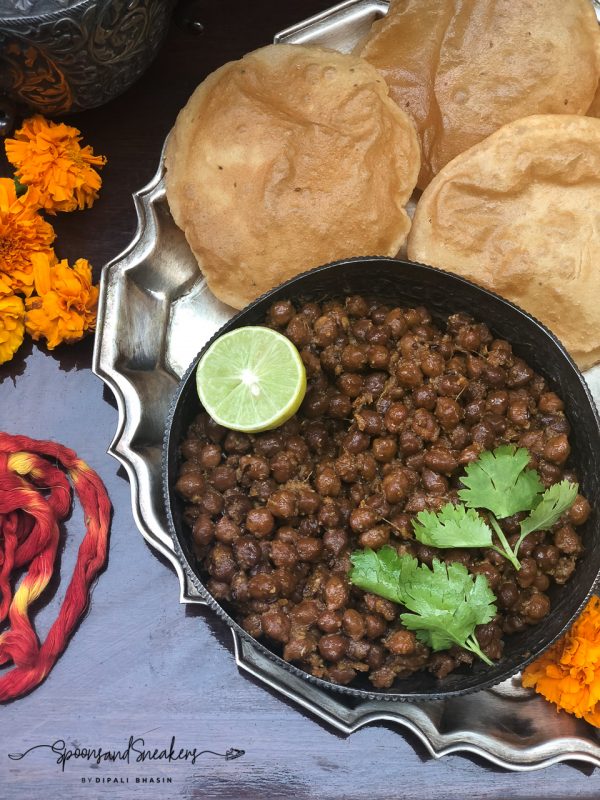
| Prep Time | 8 hours |
| Cook Time | 40 mins |
| Servings |
people
|
- 11/2 cup kala chana/ Chickpeas
- 11/2 tbsp ginger minced
- 2 Red chilles dried
- 1 green chilli
- 2 tsp Dried Mango Powder / Amchur
- 11/2 tsp salt
- 1 tsp cumin seeds/ jeera
- 1 tsp Kashmiri red chilli powder
- 3 tbsp vegetable oil
Ingredients
|

|
- Soak the chickpeas overnight or for about 8 hours. Drain the water and wash nicely.
- Add with 5 cups of water and one tsp salt. Pressure cook it. After one whistle lower the flame to medium and cook for 20 minutes. Switch off and let it cool.
- In a kadai, on medium flame add the vegetable oil, cumin seeds, minced ginger, dried red chillies, green chilli, red chilli powder, coriander powder, 1/2 tsp salt and dried mango powder. Keep stirring for a minute.
- Add the boiled chickpeas to the kadai with its residual liquid. Cook on low flame till chickpeas are dry and water has been completely soaked in by chickpeas.
- Garnish it with coriander leaves and serve it hot.

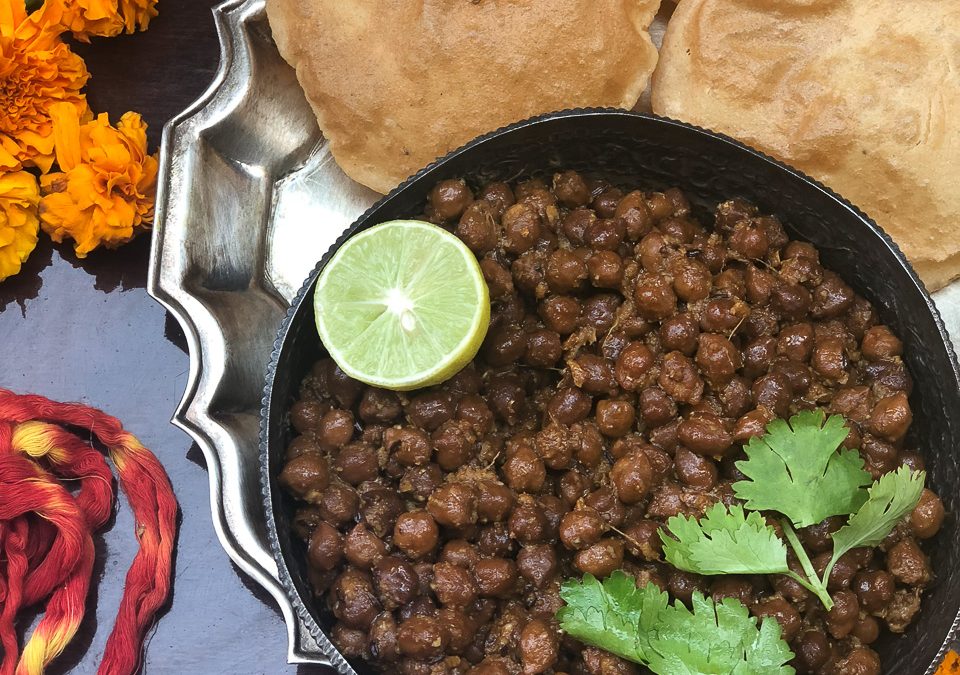
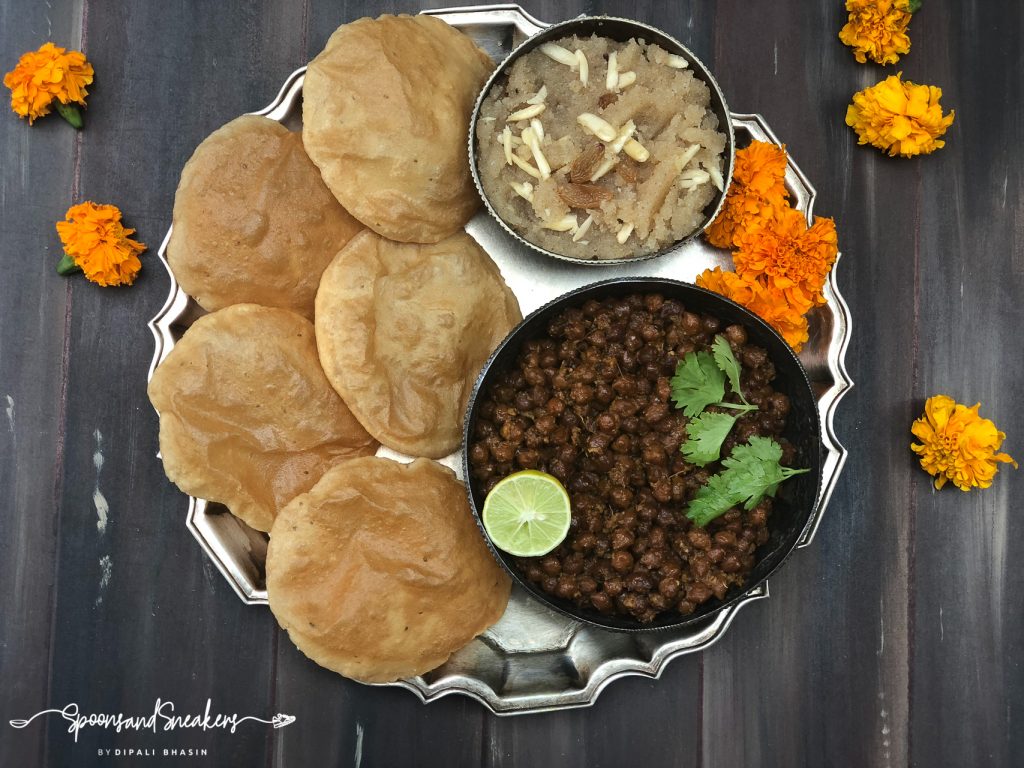
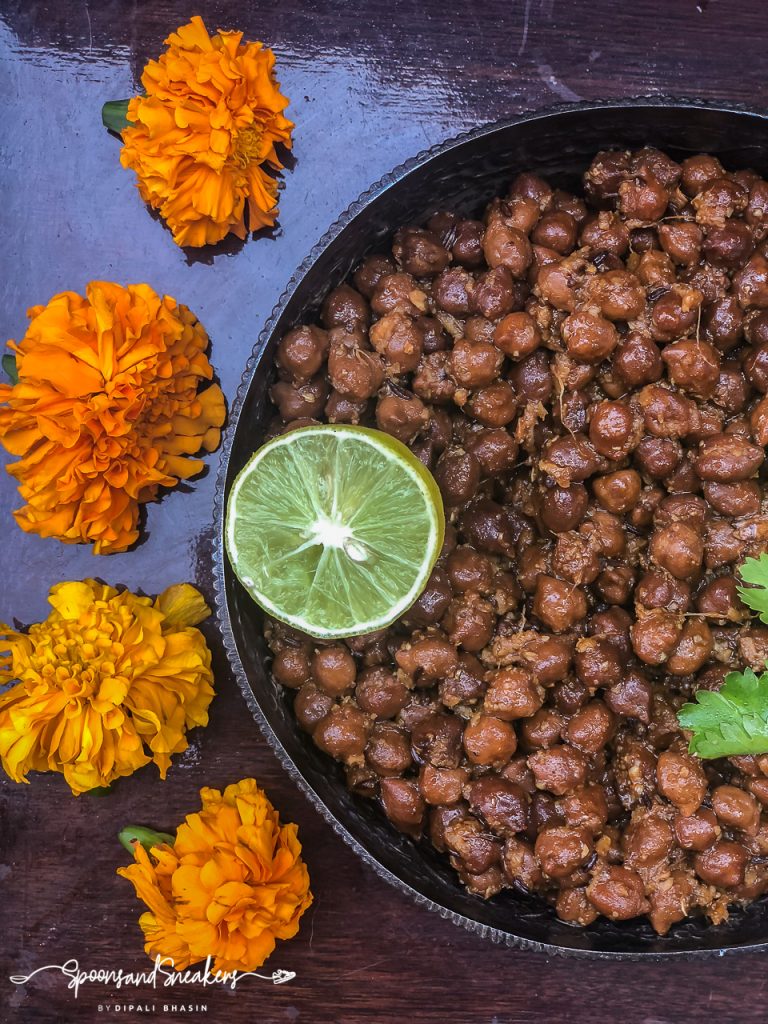
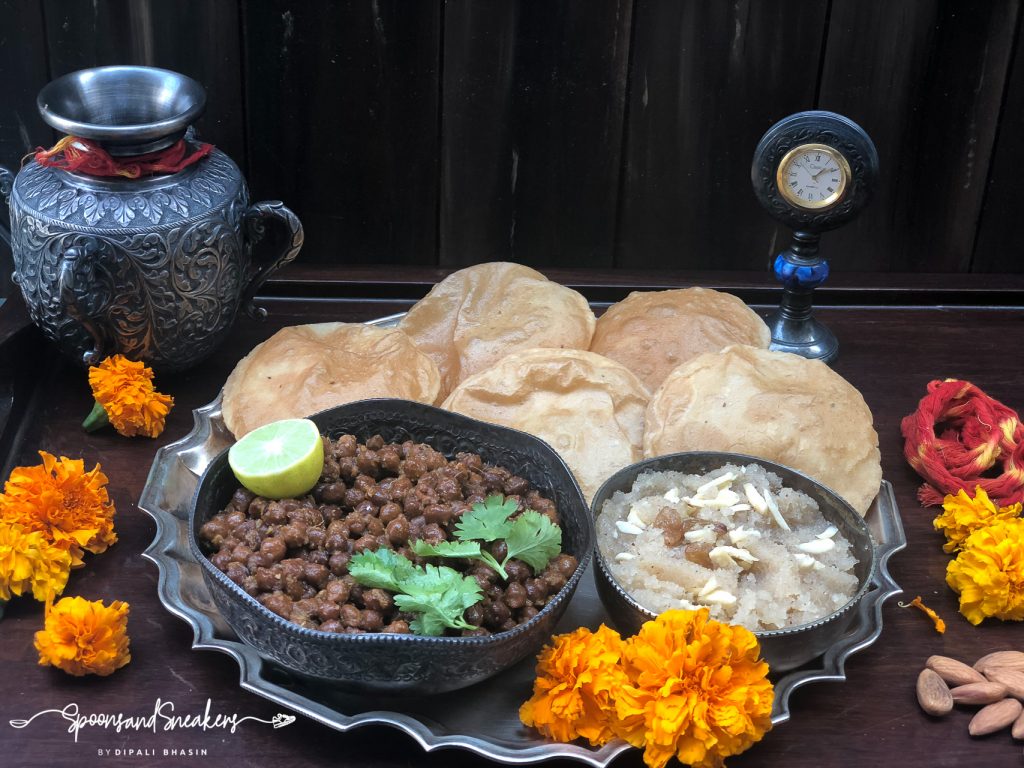

Wow!! I remember those days too and miss them. The heavenly combo of the halwa and channey with pooris is something I have been missing. Really wish I could have gatecrashed at my neighbours for this 😉
Loved your recipe Dipali – just one question; you have added in garlic but thats not mentioned in the ingredients?
Thank you so much for the response. I had mentioned minced ginger in the ingredients but erroneously written garlic in its place in the procedure. There is no use of onions or garlic in the recipe. Only minced ginger is used. Thanks for pointing out. Have corrected it.
The crux of the post is that it succeeds in conjuring up a nostalgic moment from pages of past when happiness was enshrined in simple things of life.
A wonderful read!
We are the rare breed of Punjabi’s who celebrate Naumi, and make Halwa, Poori and tari wale Aloo ki Subzi a prasad. Which means I have been looking for the ‘Ashtami wale Channe’ ki recipe for a while now. Have tried a few, but didn’t get the taste I was looking for. I have a feeling that your recipe could be ‘it’.
Going to try it out.
Your post was pure nostalgia, bring back memories of Navratras. Awesome pictures too, Dipali!